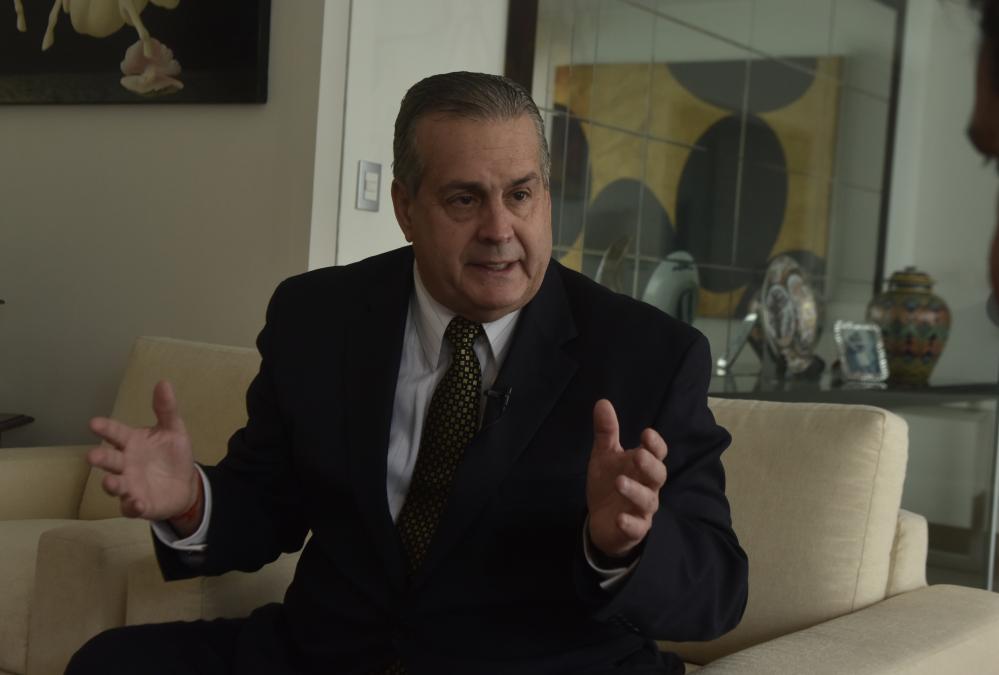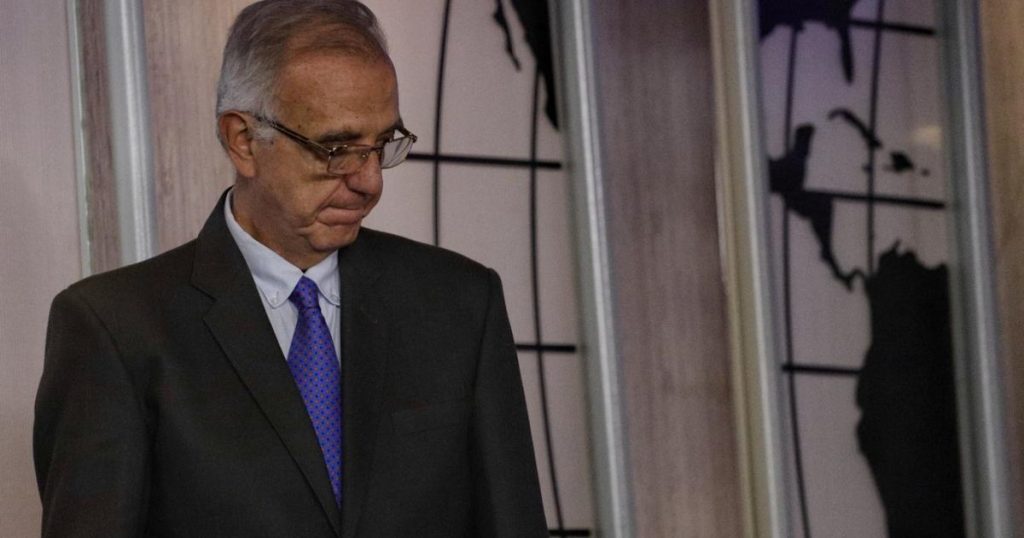Data from the Bank of Mexico indicate that, in recent years, record export figures to the United States were reached. Last year alone they stood at 490,183 million dollars and, between January and November 2024, they reached 469,603 million.
The size of these figures is the risk that some voices anticipate for Mexico.
Trump promised to impose 25% tariffs to all products that Mexico exports to the United States if migratory and drug flows are not stopped; and not even the T-MEC, which will also be reviewed in 2026, will be the lifesaver.
The Republican is very concerned about the countries with which he has a large trade deficit, such as Mexico, with whom from January to November 2024 it registers a deficit of 157.205 million dollars, the second largest after China, which is 270,421 million.
The president of Mexico, Claudia Sheinbaum, and the Secretary of Economy, Marcelo Ebrard, are very aware of the relevance of the United States and the continuity of the treaty, since in addition to the good performance of exports, they also mean greater investment.
How to get around Trump?
Guillermo Malpica, former USMCA negotiator, says that Mexico’s concerns about Trump have not changed much, so in the first place there must be a very clear strategy for negotiating with defensive interests, that is, issues in which that you have to take care of yourself; but also offensive, in what Mexico can demand of the United States.
It will also be important not to mix commercial issues with social and political issues, because this will complicate the commercial relationship and review of the treaty. “That the Secretary of Economy, Marcelo Ebrard, who has that in his powers, is in charge of the review in 2026. And that the Chancellor, Juan Ramón de la Fuente, looks at foreign policy, that is, separating the actors ”says Malpica.
However, Ignacio Martínez Cortés, coordinator of the Laboratory of Analysis in Commerce, Economy and Business (Lacen) of the UNAM, differs in this aspect, because he considers that it would be a mistake for Mexico to continue with the tradition of addressing each of them separately or in parallel. one of the issues of the bilateral relationship, and not within the framework of a comprehensive and coherent State policy; yes, without giving in to the will of the Republican.
Diversify markets and allies
Malpica points out that it is also important to continue working on the diversification of Mexico’s markets, which has 14 Free Trade Agreements with 50 countries, because more than 80% of what it sells to the world goes to the United States. “It is very dangerous to have that degree of dependence and we have treaties in force at hand, a modernized one with the European Union that will soon be modernized,” he assured.
In the case of the United States, its trade is more diversified, since 73.3% of its exports are distributed among 15 countries, Mexico represents 16.3%. But Mexico’s intention remains clear, and it is to maintain extensive trade with the United States.
Víctor Gómez Ayala, professor of macroeconomics at ITAM, explains that diversification is not so viable. “Logistics issues make it very difficult to achieve economic returns in favor of Mexico, because its advantage is its geographical proximity to the United States, which allows it to access the largest consumer market in the world.”
Another factor that can benefit the country is to locate strategic sectors in both the United States and Canada and lobby with them individually, explain what is appropriate and in turn have them transmit it to their governments, adds Carlos Novoa, president of the Mexican Institute of Executives. of Foreign Trade (IMECE).
“I think the speech is the most important, saying: ‘we are the main economic bloc, we have to strengthen it and we are rowing in the same direction.'”
Clear stance on China
China should not be left out of the good relationship that can be forged with Trump. Goméz Ayala says that Mexico must have a very clear position on the relationship it wants to have with the Asian giant and with the United States.
Trump has to see Mexico as an ally in this struggle with China, since this positions him in a favorable way in the negotiation processes against a president in the United States who is going to maintain firm rhetoric regarding trade, migration and security. .
From January to November 2024, Mexico bought merchandise worth 231,681 million dollars from the United States, while from China it imported 119,376 million dollars. That is, the United States is Mexico’s main supplier with 40.2% of total imports and China is the second, with 20.7%.
Novoa adds that it must be explained very well that what is imported from the Asian country is because it is really needed. “Not everything can be just black or white, there are many nuances. I think that much of what is being bought from China is not what can be bought from the United States.”
Specialists emphasize that complex times are coming for Mexico, and there is no magic solution to appease the earthquake that Trump represents, but something can always be done to lose as little as possible, or at least be reciprocal.
Trump’s tools
President-elect Trump’s announcement about the imposition of tariffs on imports from the United States’ main trading partners raises multiple questions. The trade policy strategy implemented during his first term offers several perspectives, says the law firm, Holland & Knight.
During his first four years in office, he imposed tariffs worth approximately $80 billion on imports that reached $380 billion. To do this, it turned to legal provisions such as Sections 201 (relating to solar panels and washing machines) and 301 (focused on Chinese imports) of the Trade Act of 1974, as well as Section 232 of the Trade Expansion Act of 1962, covering steel and aluminum products.
You can also use the International Emergency Economic Powers Act, which allows the president to “prohibit transactions” and “regulate” the import and export of goods during an emergency period that presents an “unusual and extraordinary threat.”














